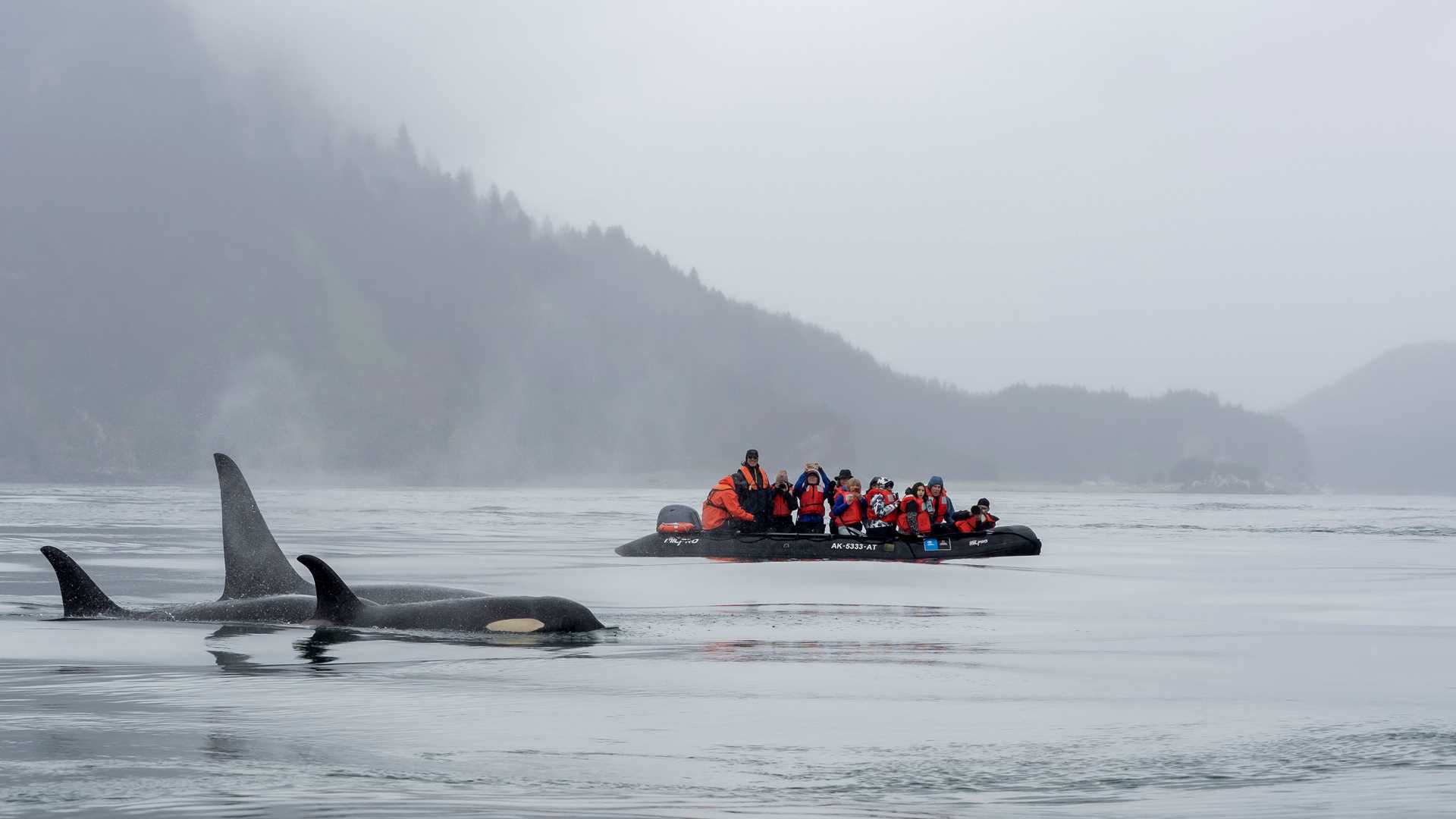Morning found National Geographic Venture anchored just beyond the mouth of Fox Creek. With a light drizzle to start the day, intrepid guests joined staff on the bow to survey the surface of the water and the margins of the coastline for wildlife. The presence of life was obvious; surrounding the ship were diving murrelets and scoters. Kittiwakes and larger gulls wheeled around and circled, diving for baitfish, while loons, scoters, and phalaropes floated near the surface. Jaegers patrolled the area, chasing gulls to force them to give up their fish.
Following breakfast, staff and passengers made their way to the shores near the mouth of Fox Creek. It was still drizzling, and groups split up to explore the intertidal zone and the temperate rainforest. In the coastal meadows, spring flowers had bloomed to the delight of many of the staff; violets, buttercups, and shooting stars splashed the meadow with yellows, pinks, and purples.
In the forest, the sounds of spring birdsong filled the soundscape with the tunes of the temperate rainforest. Golden-crowned kinglets, Pacific wrens, and Wilson’s and Townsend’s warblers belted their sounds from spruce trees and alder groves. Signs of mammals abounded; deer tracks, bear scratches and scat, and impressively-sized squirrel middens helped illustrate the story of how the landscape is used by animals.
Once back on the ship for lunch, the deck team pulled the anchor, and we made the short trip towards the Inian Islands. The Inian Islands are situated where the Gulf of Alaska meets the Inside Passage. Here, strong tidal forces and varying underwater topography combine to create conditions for marine wildlife viewing. Because of the passage of fast-moving waters during tidal changes, birds and marine mammals congregate to take advantage of the abundance of fish that pass through the area.
Most trips to the Inian Islands can be very exciting, but today’s trip brought nearly endless surprises. The excitement began just as we loaded up into Zodiacs with the call to drivers that a small pod of killer whales had been spotted off the stern. These animals are often somewhere in the area, but it is not frequent that we can view them from Zodiacs. All boats were able to catch up to the whales to get closer looks, watching respectfully as the four animals purposefully moved past the northernmost Inian Island and into the gulf. Gulls and the occasional puffin made passes as we all watched from our Zodiacs on choppy seas. During the flurry of activity, we noticed humpback whales breaching offshore. Boats of passengers and staff dispersed to watch both cetaceans put on their respective shows.
Meanwhile, the more regularly-expected Inian Island animals were carrying on and hunting while the tides favored hunting. A strong upwelling of water pushed confused and overwhelmed fish towards the surface where Steller sea lions and bald eagles waited. Some naturalists counted over forty eagles in one sweep of the binoculars from a Zodiac. Other players in the Inian Islands included curious sea otters, pigeon guillemots, oystercatchers, and a variety of seabirds.
Eventually, we pulled ourselves away from the action and returned to the ship. Time was given to all aboard to warm up before cocktail hour, recaps, dinner, and a presentation on kelp forests by one of the undersea specialists, Jesse. With high spirits yet again, we will set our sights for Glacier Bay National Park by tomorrow morning.







